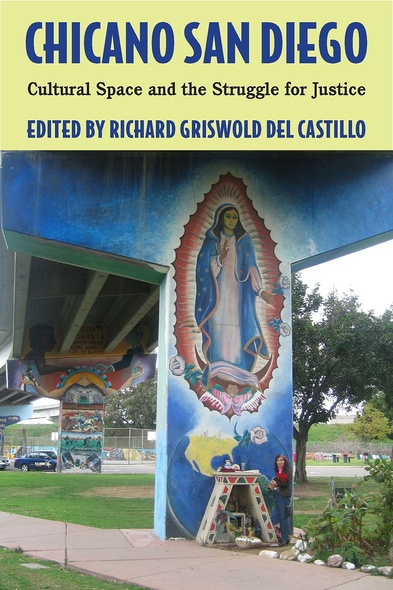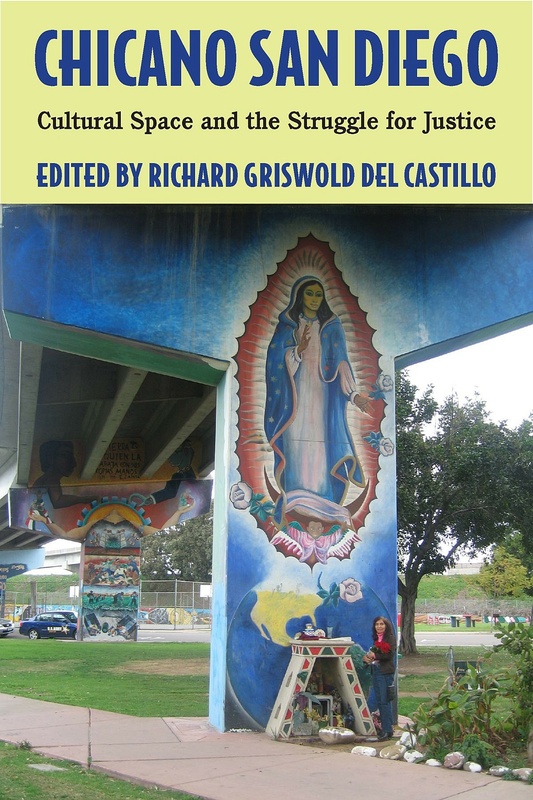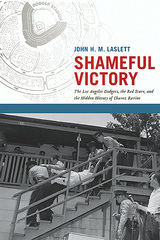Chicano San Diego
Cultural Space and the Struggle for Justice
The University of Arizona Press
The Mexican and Chicana/o residents of San Diego have a long, complicated, and rich history that has been largely ignored. This collection of essays shows how the Spanish-speaking people of this border city have created their own cultural spaces. Sensitive to issues of gender—and paying special attention to political, economic, and cultural figures and events—the contributors explore what is unique about San Diego’s Mexican American history.
In chronologically ordered chapters, scholars discuss how Mexican and Chicana/o people have resisted and accommodated the increasingly Anglo-oriented culture of the region. The book’s early chapters recount the historical origins of San Diego and its development through the mid-nineteenth century, describe the “American colonization” that followed, and include examples of Latino resistance that span the twentieth century—from early workers’ strikes to the United Farm Workers movement of the 1960s. Later chapters trace the Chicana/o Movement in the community and in the arts; the struggle against the gentrification of the barrio; and the growth of community organizing (especially around immigrants’ rights) from the perspective of a community organizer.
To tell this sweeping story, the contributors use a variety of approaches. Testimonios retell individual lives, ethnographies relate the stories of communities, and historical narratives uncover what has previously been ignored or discounted. The result is a unique portrait of a marginalized population that has played an important but neglected role in the development of a major American border city.
In chronologically ordered chapters, scholars discuss how Mexican and Chicana/o people have resisted and accommodated the increasingly Anglo-oriented culture of the region. The book’s early chapters recount the historical origins of San Diego and its development through the mid-nineteenth century, describe the “American colonization” that followed, and include examples of Latino resistance that span the twentieth century—from early workers’ strikes to the United Farm Workers movement of the 1960s. Later chapters trace the Chicana/o Movement in the community and in the arts; the struggle against the gentrification of the barrio; and the growth of community organizing (especially around immigrants’ rights) from the perspective of a community organizer.
To tell this sweeping story, the contributors use a variety of approaches. Testimonios retell individual lives, ethnographies relate the stories of communities, and historical narratives uncover what has previously been ignored or discounted. The result is a unique portrait of a marginalized population that has played an important but neglected role in the development of a major American border city.
“Although Chicano San Diego has something for general readers, students, and academics alike, it especially makes an important contribution toward Chicana/o studies at high school and college introductory levels.” — Southern California Quarterly
Richard Griswold del Castillo is Professor of Chicana and Chicano Studies and chair of the department at San Diego State University. He is the co-author of Competing Visions: A History of California.
Introduction: A Border Region and People
Richard Griswold del Castillo
1. Natives and Settlers: Th e Mestizo Heritage
Richard Griswold del Castillo
2. The American Colonization of San Diego
Richard Griswold del Castillo
3. From Revolution to Economic Depression
Richard Griswold del Castillo
4. World War II and the Emerging Civil Rights Struggle
José Rodolfo Jacobo and Richard Griswold del Castillo
5. El Campo: Memories of a Citrus Labor Camp
María de la Luz Ibarra
6. “¡Sí, Se Puede!”: Chicana/o Activism in San Diego at Century’s End
Isidro D. Ortiz
7. Chicanas in the Arts, 1970–1995: With Personal Refl ections
Rita Sánchez
8. The Struggle against Gentrifi cation in Barrio Logan
Emmanuelle Le Texier
9. The Border and Human Rights: A Testimony
Roberto L. Martínez
10. Learning from the Past: Some Concluding Comments
Notes
Bibliography
Index







